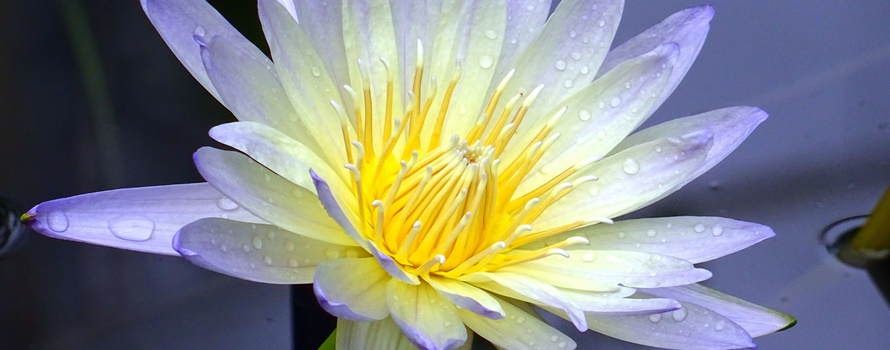Collective Charging of sacred Images and Statues
Through devotion and belief of the many religious people, very strong psychogons can be built at statues and images of saints and deities, especially at pilgrimage sites. The charging of the psychogons can be so strong that wonders can happen around those sacred objects.
The Philips Experiment already has shown impressive paranormal phenomena. Just think of how strong an image or statue, to where thousands of people go on a pilgrimage, could be charged!
Here a legend which tells of a teleportation.
Loretto in Prague (by R. R. Ballabene)
To understand what real religiosity can make happen, one must have been at Loretto once, and must have seen the monstrances and cups in the narrow sacristy which can only be seen here.
When I close my eyes, out of the ether the glorious arcade court comes before my inner eye. The frescoes, of which the most lovely is Madonna with heir golden shoes. There is a legend, that once a poor wanderer knelt before her image and devoutly begged her to help him, for he didn’t have any money and was on the verge of dying of hunger. At this, the lovely maiden stripped one of her golden shoes from her foot and threw it toward him. He picked it up and she nodded at him with a smile, that he may keep it. But when he was about to sell it at the inn, he was captured and suspected of robbery. He affirmed that he was innocent, but nobody believed him. When they were about to cut off his right hand – as it was common in those times for a thief – he begged pleadingly that they may bring him once more to the statue of the Mother of God, so as to could ask her to prove his innocence. So the High Council decided to bring him in public to the Madonna, so that she may prove him a liar. At the same time it was made known that, if he had lied, his tongue would be ripped out for this sacrilege, too.
With much hype and a lot of company, judge, council, bishop and the people went to the image, where the wanderer was brought as well by the guards. He knelt before the image and prayed. And there, suddendly a second golden shoe was flung through the air. But when all the people looked up, the lovely Mother of God sat there, barefoot on heir chair, and so she sits there smiling until today, helping those who pray to her in sincere hardship.
Tear wonders like the one of Maria Pötsch in Vienna, in the Stephansdom, have occured many times. They are a special occasion for sceptics who want to deny such happenings with a lot of arguments. Once a Christian-Arabic Turk told me that in his family, tear wonders were also often happening at an image. Those "wonders" bring to mind the Vibhuti-wonders in recent times, where Vibhuti (= sacred ashes) emerges from Indian images or statues. Here it is tears, in other countries Vibhuti – other people, other expectations – but everywhere the same principle of materialisations applies.
A friend of mine was at spiritistic sessions over a longer period of time and materialisations and messages occured frequently there. The last excuse of sceptics is always that everything be a lie, but I would bet my life that he has said the truth.
Maria von Pötsch, Vienna, St. Stephen’s Cathedral
She is known as the "weeping Madonna", because according to witness reports and church office investigations, flowing of tears from her eyes has occured. (The special thing about catholic wonders is that there exist exact records and witness reports, in opposition to traditions of other religions and cultures. At beatifications and canonisations, a special process is implemented in which the "advocatus diabolos" has the task of bringing forth sceptical arguments or disprove evidences.)
In the St. Stephen’s Cathedral in Vienna resides the miraculous image of the "Weeping Madonna of Pötsch". It hang in the church in the Hungarian Pötsch (today Máriapócs) for 20 years and was scarcely paid attention to. However, on the 4th november 1696 it was observed that tears flooded from the eyes of the Marian image repeatedly. Many witnesses confirmed this miracle of lacrimation, and by the wish of the emperor Leopold I it was brought to Vienna in 1697. The miraculous image is highly esteemed until today (cf. wikipedia.de: Madonna von Pötsch (Wien)).
Even copies of an image can work wonders through the belief of many pilgrims. In a wooden cemetery chapel in Vienna built in 1660, the miraculous image "Mariahülf" (Mary’s help) became a destination for many pilgrims of Vienna and neighborhood. This image is a copy of the miraculous image at Mariahilfer Berg near Passau – which in turn is a copy of the miraculous image of Innsbruck in the urban parish church. In all three images, miracles have been observed and reported. Accounts of miraculous healings are partly preserved until today in the library of Mariahilf.
© Alfred Ballabene (Vienna) translated by Corra

